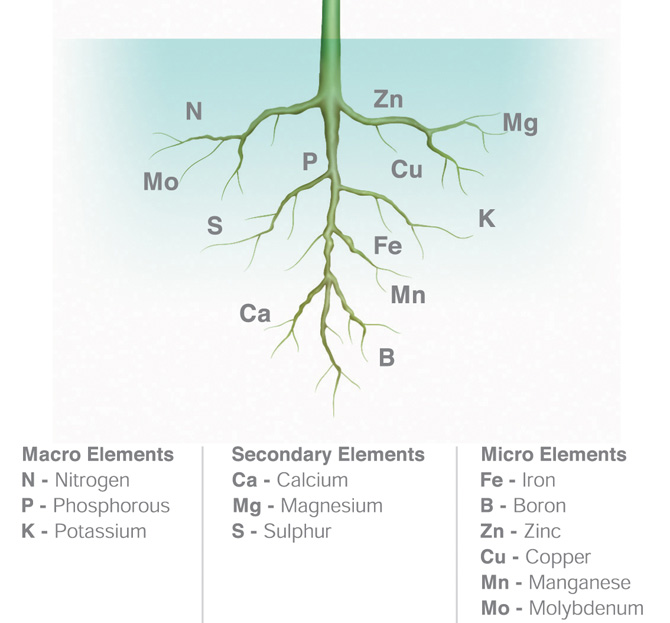The 6 Essential Nutrients For Healthy Plants

Growing happy, healthy plants is not always easy! Plants need thirteen different minerals from the soil in order to fully develop. Six of these nutrients are needed in large quantities.
These six essential nutrients are nitrogen, phosphorus, potassium, magnesium, sulfur and calcium. The cool thing about them is that they help create new cells, which then organize into plant tissue. Without these nutrients, growth and survival would not occur.
What do these nutrients do?
1. Nitrogen: Nitrate (the form of nitrogen that plants use) helps foliage grow strong by affecting the plant’s leaf development. It is also responsible for giving plants their green coloring by helping with chlorophyll production.
2. Phosphorus: Phosphorus is responsible for assisting with the growth of roots and flowers. Phosphorus also helps plants withstand environmental stress and harsh winters.
3. Potassium: Potassium strengthens plants, contributes to early growth and helps retain water. It also affects the plant’s disease and insect suppression.
4. Magnesium: Magnesium contributes to the green coloring of plants.
5. Sulfur: Sulfur helps plant resist disease and grow and form seeds. They also aid in the production of amino acids, proteins, enzymes and vitamins.
6. Calcium: Calcium aids in the growth and development of cell walls. This is key because well-developed cell walls help resist disease. It is also necessary for metabolism and the “uptake of nitrate”.
How do you add these nutrients to the soil?
One of the great things about the six essential nutrients is that they are easy to find. Healthy soil is already pumped with these nutrients although some like nitrogen are often locked in an unusable form for the plant.
Bionutritional products help increase the number of nutrients and maximize their potential. Bionutritional products, like Holganix, contain calcium and magnesium (two of the essential nutrients) and other nutrients, fungi and beneficial microbes. The fungi and beneficial microbes help utilize these nutrients to the best of the plants’ ability.
For example, nitrogen-fixing bacteria, found in Holganix, helps break down nitrogen from the air or nitrogen locked in the soil and turn it into nitrate — the form that’s usable by the plant. In addition to nitrogen-fixing bacteria, Holganix also contains other beneficial microbes that help break down any potassium and phosphorus tied in the soil for the plants. Furthermore, they increase the efficiency of the plant to utilize other nutrients.
Source: www.holganix.com



2 Comments
Natesh Shekar · June 28, 2017 at 9:45 pm
I have a roof garden and I am growing vegetables only. I have been growing vegetables for the past 4 years and have around 300 bags. I would like some inputs as to how to maintain and grow vegetables and get the maximum yeild.
Teddy · June 29, 2017 at 5:32 am
@Natesh Shekar
What kind of vegetables are you growing? Leafy veggies, root veggies?
I’m going on a limb and apply some assumptions,
1. Leafy veggies
2. Seed to harvest in around 45-60 days
You’re probably going to need to top up some topsoil after every harvest just to maintain the soil mass that you have.
During the culturing period, have ample water supply and proper fertilizers.
1. Organic fertilizers that you may need
– Manure (chicken or cow), make sure to dry the manure first or else there might be fecal bacteria that may get in contact with your produce when you harvest
2. Inorganic fertilizers
– For leafy veggies, go to your garden shop or a fertilizer shop and look for compound fertilizers with NPK formulations with ratios of N:P:K in 2:1:3 (Something like 10:5:15). Apply it regularly according to the dosage and you’ll notice more consistent harvest quality.
Comments are closed.